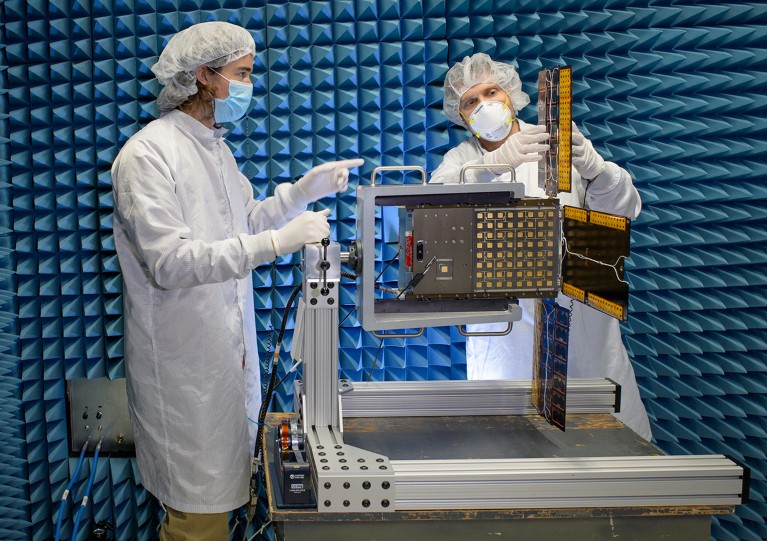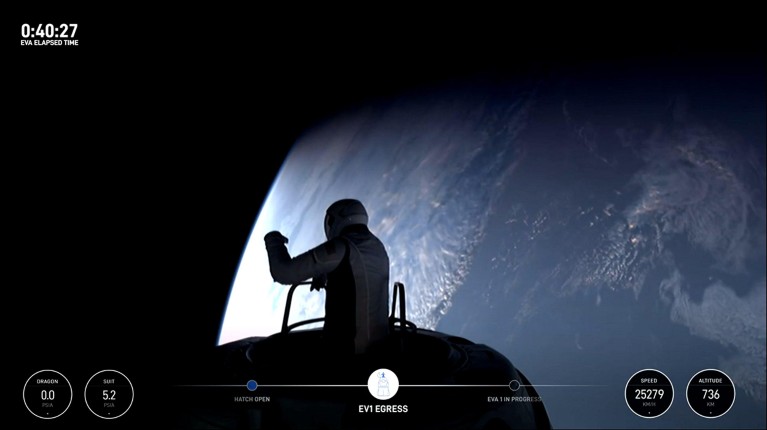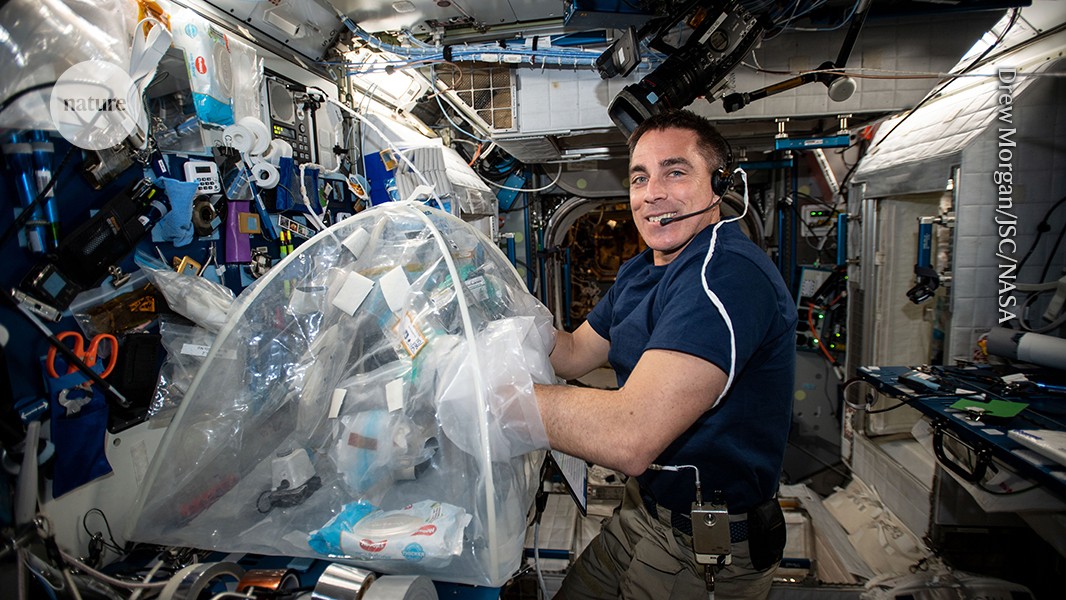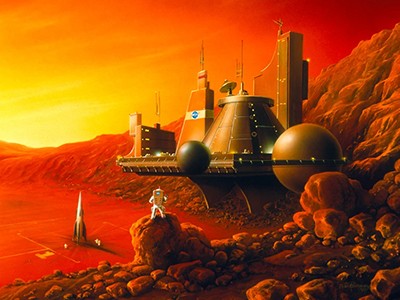Space exploration is entering a new era.
NASA’s Artemis programme
, and related Artemis Accords (an international cooperation involving more than 50 nations), aims to take humans to the Moon as soon as 2026 and, eventually, to Mars. China plans to send its own crewed missions to the Moon by 2030 and to build a lunar base.
Missions involving
public–private partnerships
are also transforming the space sector
1
. For example, in 2024, Polaris Dawn, a private mission by
space-technology firm SpaceX
, saw US entrepreneur Jared Isaacman — who is nominated for the role of NASA administrator — and SpaceX engineer Sarah Gillis become the first civilians to perform a spacewalk. But there are many challenges ahead. Assuring astronauts’ health is one.
Ethics in outer space: can we make interplanetary exploration just?
Humans are building a future in space. But we are not built for space. Even the most fit and healthy person can find space disabling
2
.
Outside Earth’s protective atmosphere, the human body is subjected to high levels of radiation. According to the European Space Agency, an astronaut travelling to Mars would receive the equivalent of one year’s exposure to radiation on Earth for each day of their months-long journey. This would be likely to increase astronauts’ risk of cancer and cardiovascular diseases, for instance
3
.
Moreover, the combination of radiation and time spent in microgravity can cause a range of health conditions. Weight-bearing bones lose, on average, around 1% of their mineral density per month during space flight
4
, increasing the risk of fractures. Fluid shifts in the eyes can increase pressure and affect vision
5
. There’s even an increased risk of kidney-related illnesses
6
.
On top of the physical hurdles is the possibility that the isolation will affect astronauts’ mood and productivity, taking a toll on their mental health.
As humanity sets its eyes on the Moon and Mars, these and other challenges must be addressed using innovative technology and research
2
,
7
,
8
. Such innovations should also benefit people on Earth. Here are four key strands of space medicine and health research that, in my view, are both crucial for mission success and likely to improve human health more broadly.
Remote health care
Telemedicine is integral to human space flight, allowing physicians to remotely monitor and support the mental and physical well-being of astronauts through telecommunications technologies
7
,
8
.
However, because deep-space missions focus on travelling huge distances, telecommunication delays can introduce potentially life-threatening waits — for instance, it can take 20 minutes each way for astronauts on Mars to receive medical advice from Earth. That’s a long time if, say, someone has a heart attack and the crew needs support to treat them.
Artificial intelligence (AI) applications are being developed to help astronauts to get medical support quickly — similar to how AI-driven medical diagnosis and advice technologies can aid physicians and patients on Earth. This would help to make health care in space autonomous. But using AI in space brings operational challenges. Who will fix the system if it breaks, for instance, and how can a device be updated during a mission to keep pace with emerging medical knowledge and guidelines and the crew’s changing needs.

Researchers test the solar array of NASA’s BioSentinel spacecraft.
Credit: Dominic Hart/ARC/NASA
Ensuring that adequate medications are available is another big challenge, especially for long missions. One study found that, on the International Space Station (ISS), each crew member studied had taken an average of four routine drugs a week
9
— such as analgesics for pain relief and headaches, sleeping aids
10
and decongestants. Essential medicines, including antibiotics and drugs to treat cardiac emergencies, are also stocked on board.
However, according to one estimate
11
, more than half of the medications on the ISS have a shelf life of less than three years, and some expire in less than two. That’s too short for a crewed mission to Mars, which would last at least three years. Between 60% and 98% of the medications could expire before a Mars mission’s end
11
. Resupplying drugs across such huge distances is unfeasible.
Is there life on Mars? What a cave on Earth can teach us
The US Food and Drug Administration has demonstrated that — on Earth — medications can be effective for years after their expiry dates
12
. However, taking drugs past their expiry date can be risky and their effectiveness can diminish. Their strength can decrease, their chemical composition might change and there’s a risk of bacterial growth (see
go.nature.com/4mkqbeb
). Moreover, many pharmaceutical ingredients degrade under extreme conditions, such as radiation
13
.
Some evidence suggests that storing medicines at their optimal temperature and preventing exposure to light and heat can extend the period during which they are effective
12
. But with this research having been conducted on Earth, it’s not clear whether the same applies to space.
Even recommended doses might change in space. One study exploring the use of sleep medications on the ISS and in space shuttles, for instance, noted that in 17–19% of cases in which an astronaut took a sleep drug, a second dose was taken on the same night
10
. Whether this was attributable to the small number of astronauts studied, a difference in the way the medicines degraded over time or something else remains unclear.
Researchers thus need to establish what the optimal dose and storage conditions of drugs are and ascertain medicines’ rates of degradation in space — findings that could also help to improve medications on Earth. Similarly, medical technologies developed for space or using space know-how can be adapted for use on Earth. Cardiovascular surgeon Michael DeBakey’s left ventricular assist device — a titanium pump used to keep blood flowing in people with heart conditions awaiting transplants — is one such space-technology spin-off. The design was honed in collaboration with NASA engineers using simulations of fluid flow similar to those moving through rocket engines.
Mental health
Ensuring the crew’s
mental health is a concern for any space mission
, from a stint on the ISS to a long-term trip to Mars, with crew confined to limited quarters, few companions and communication delays that restrict conversations with loved ones. Fatigue and disturbed sleep — brought about by stress, noise, being away from home and sleeping in an unusual environment — are common in space and could exacerbate mental-health problems. In any extreme environment, the whole crew might be affected, as illustrated by reports in March that a researcher stationed at a remote base in Antarctica threatened to kill colleagues.

The crew members of the Polaris Dawn were the first civilians to perform a spacewalk.
Credit: UPI/Alamy
Over decades of supporting astronauts, NASA and other space agencies have accumulated expertise around mental health in extreme environments involving isolation and confinement — knowledge that has proved invaluable to resolve crises on Earth. For example, the Chilean government reached out to NASA for guidance and support in 2010 during the efforts to rescue 33 Chilean miners trapped and isolated underground
8
.
Earth-based analogue missions — which simulate the challenges of being in space — can help researchers to anticipate the issues that might arise from isolation and confinement. Other lessons can be learnt once astronauts have established themselves on the lunar surface and in orbit around the Moon, offering further opportunities to prepare for going to Mars.
Research is needed to find ways to improve mental health in space. For example, the European Space Agency is testing initiatives such as a lighting system to maintain more-conventional circadian rhythms, exploring how daily circadian rhythms change during long space missions and using virtual-reality headsets to provide astronauts with mental relaxation.
Food production
Systems for producing food sustainably are needed for deep-space missions. Travel to Mars could take between seven and ten months, making it impractical to rely solely on food shipped from Earth.




